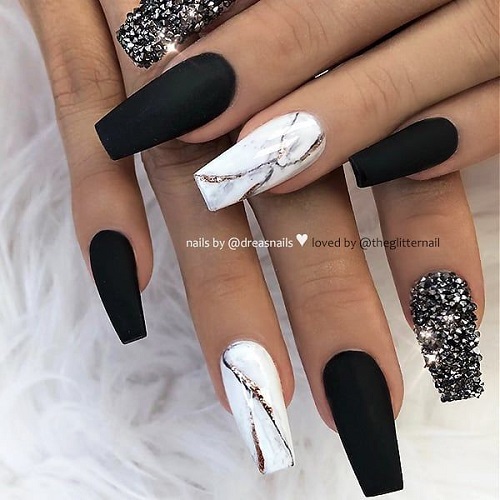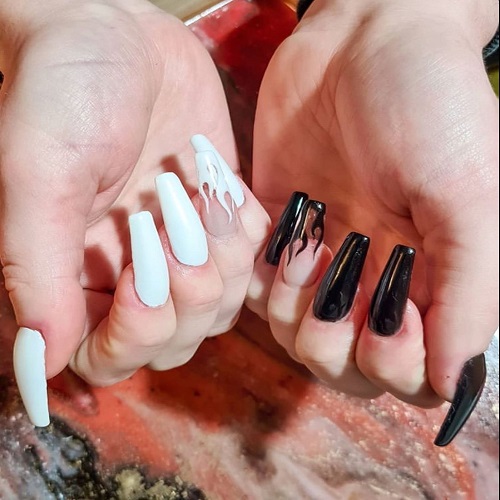Table of Contents
Nail dip powder is a popular method for enhancing nails. It involves dipping the nails into a powder and sealing it with a topcoat. Although it is known for its long-lasting and durable properties, there comes a time when it needs to be removed. Removing nail dip powder may seem daunting, but with the right tools and techniques, it can be done safely and effectively.
Step 1: Gathering the Necessary Materials
To successfully remove nail dip powder, you’ll need the following materials:
- Acetone
- Cotton balls or pads
- Aluminum foil
- Cuticle pusher
- Nail buffer
- Cuticle oil
Step 2: Soaking the Nails in Acetone
The first step in the removal process is to soak your nails in acetone. Acetone is a powerful solvent that breaks down the dip powder, making it easier to remove. You have two options: either use a bowl of acetone or soak your nails in acetone-soaked cotton balls or pads.
To soak your nails, follow these steps:
- Use a nail buffer to gently remove the shiny topcoat from the nail.
- Cut the aluminum foil into small squares that can cover your nails.
- Soak the cotton balls or pads in acetone and place them on top of your nails.
- Wrap the aluminum foil around your fingertips, securing the cotton balls or pads in place.
- Allow the acetone to work its magic for 15-20 minutes, breaking down the dip powder.
- After 15-20 minutes, check your nails. If the dip powder has loosened, use a cuticle pusher to gently scrape it off. If it hasn’t, re-wrap your nails and wait another 5-10 minutes.
Remember, removing nail dip powder requires patience. Avoid rushing the process to prevent any damage to your nails.
Tips and Tricks for a Successful Nail Dip Powder Removal
Removing nail dip powder can be a tiring process, but with the following tips and tricks, you can make it easier and more effective.
Using Foil Wraps to Speed up the Soaking Process
To speed up the soaking process, try using foil wraps. These wraps trap the heat generated by the acetone, facilitating faster breakdown of the dip powder. Additionally, you can place a warm towel on top of the foil wrap to generate even more heat.
Avoiding the Use of Metal Tools to Prevent Nail Damage
Using metal tools like metal cuticle pushers or nail drills may cause damage to the nails if not used correctly. It’s best to opt for a plastic or wooden cuticle pusher when gently scraping off the dip powder. If you prefer using a nail drill, ensure it’s set at the lowest speed and exercise caution to avoid harming your nails.
Using Cuticle Oil to Nourish Nails after Removal
After removing the nail dip powder, your nails and cuticles may feel dry and brittle. To nourish them, apply a cuticle oil that contains natural oils such as jojoba, almond, or coconut oil. This will moisturize and strengthen your nails, reducing the chances of breakage.
Alternative Methods for Removing Nail Dip Powder
If you don’t have acetone or would rather avoid using it, there are alternative methods for removing nail dip powder.
Using Non-Acetone Nail Polish Remover
Non-acetone nail polish remover is a milder alternative to acetone that can still eliminate nail dip powder. It contains ethyl acetate, which is gentler on the nails and cuticles. However, it may take longer to break down the dip powder, necessitating a longer soaking period.
Using a Nail Drill
A nail drill, a power tool used to remove nail dip powder, can be an alternative to soaking in acetone. It works by sanding off the powder using an abrasive bit. Keep in mind that using a nail drill requires skill and practice to ensure safety and effectiveness. Misuse may result in nail damage.
In conclusion, removing nail dip powder can be safely and effectively accomplished with the right tools and techniques. Whether you choose acetone, non-acetone nail polish remover, or a nail drill, make sure to adhere to the proper steps and care for your nails and cuticles after removal. With these tips and tricks, you’ll bid farewell to your old nail dip powder and welcome a fresh set of nails!







